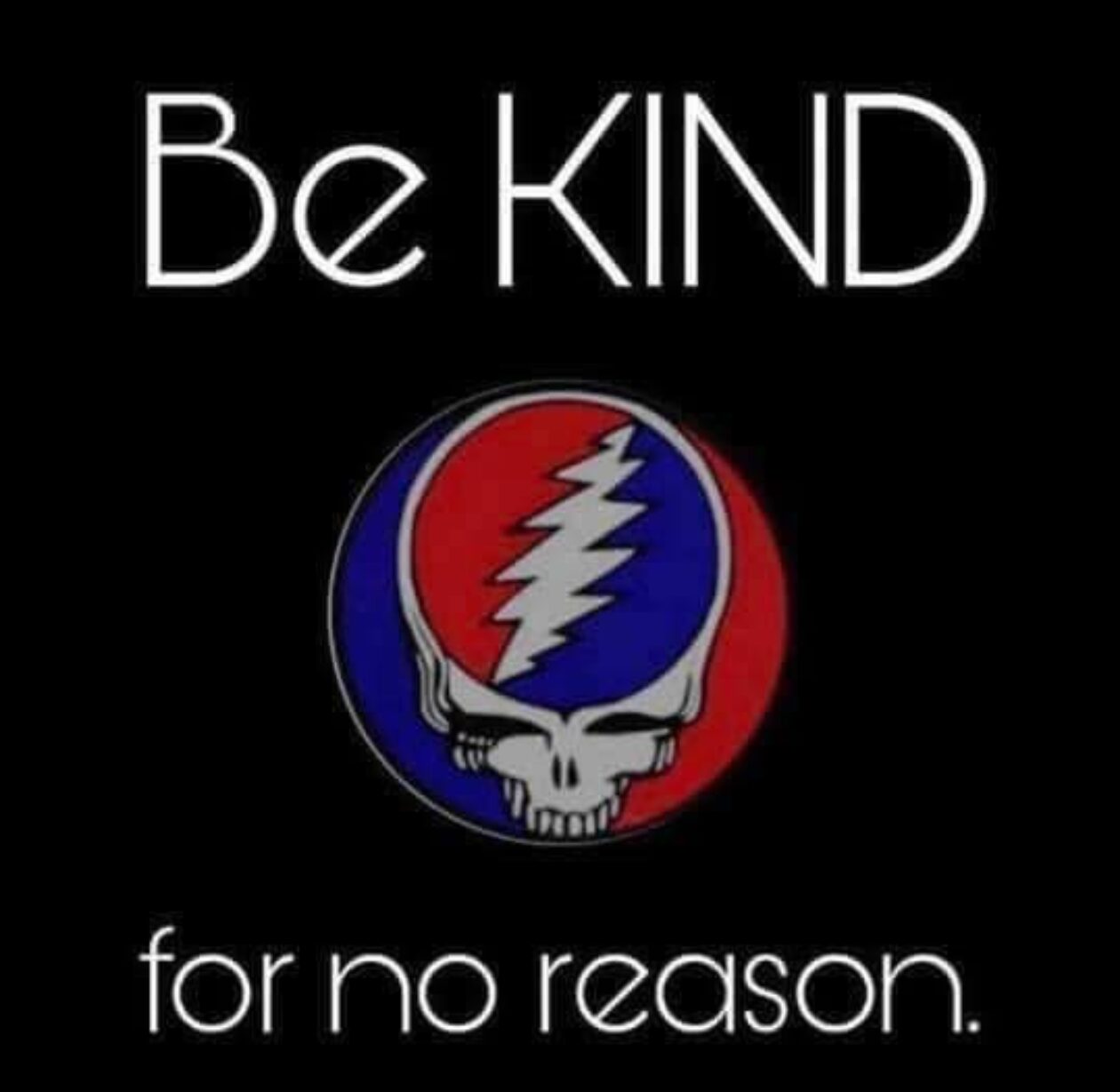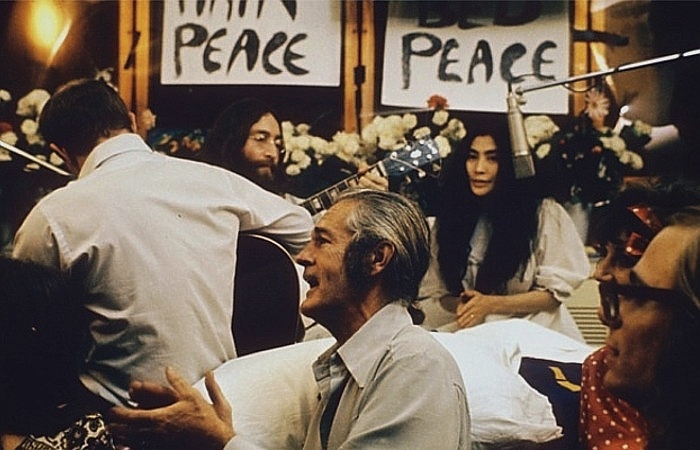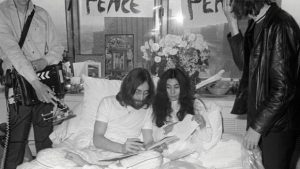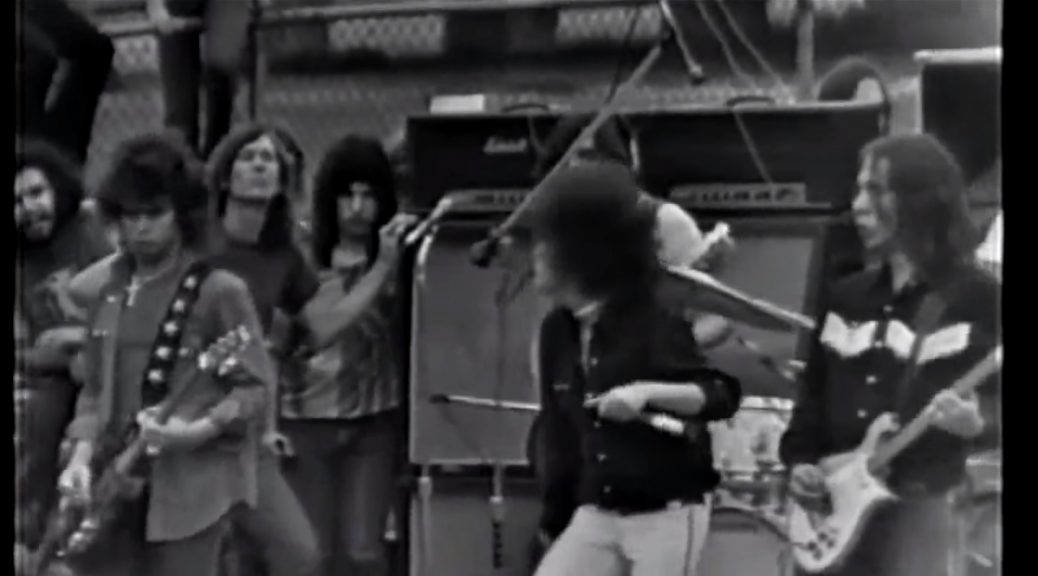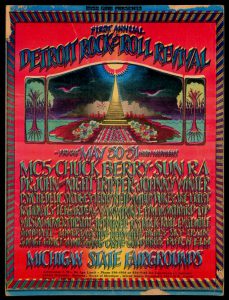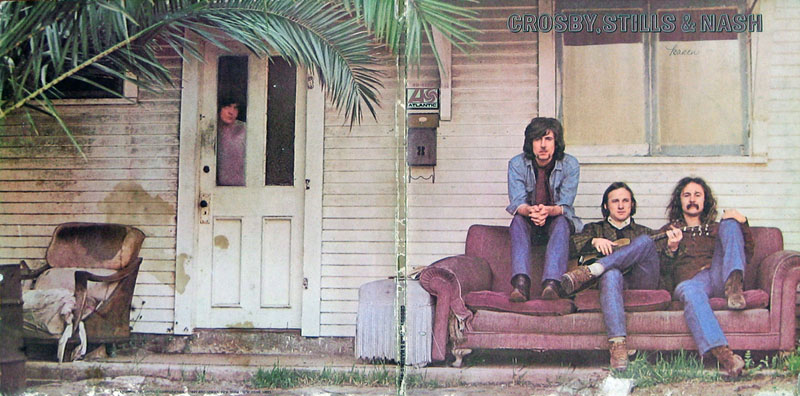John Yoko Give Peace Chance
June 1, 1969
John Yoko Give Peace Chance
Apolitical Beatles
While the Beatles as a group typically remained apolitical, their fame visibility, and life style put them on the world stage whether they wanted to be there or not.
1969 and the Vietnam war continued despite new President Nixon’s promises to end it. The Beatles were still recording as a group (they’d begin the Abbey Road album in exactly a month) and were still controversial (radio stations were banning the “Balled Of John and Yoko” because of the line “Christ you know it ain’t easy.”)
John Yoko Give Peace Chance
John & Yoko
It seemed the more others criticized Yoko Ono and her supposed negative impact on The Beatles, the more John fell in love with her and wanted to prove to the world he wasn’t listening to those criticisms.
John and Yoko had married on March 20, 1969 and began a number of peaceful events to promote peace and end war. In an Amsterdam interview he said: What we’re really doing is sending out a message to the world, mainly to the youth, especially the youth or anybody really that’s interested in protesting for peace, or protesting against any forms of violence and we say everybody’s getting a bit heavy or bit intellectual about it. Everybody’s talking about peace, but nobody’s doing anything about it, except for a few people, and the things like the Grosvenor Square marches in London. The end product of it was just newspaper stories about riots and fighting. And we did the bed event in Amsterdam and the Bag Piece in Vienna just to give people an idea, that there’s many ways of protest and this is one of them. And anybody could grow their hair for peace or give up a week of their holiday for peace or sit in a bag for peace, protest against peace anyway, but peacefully. Because we think that peace is only got by peaceful methods and that to fight the establishment with their own weapons is no good, because they always win and they’d been winning for thousands of years. They know how to play the game ‘violence’ and it’s easier for them when they can recognize you and shoot you. They don’t know how to handle humor, and peaceful humor. And that’s our message really.
John Yoko Give Peace Chance
Toronto Bed-In
One of these events, a Bed In, took place in Toronto and on June 1, 1969 they recorded “Give Peace a Chance” while in their room with several others helping such as including Timothy Leary, Petula Clark, Dick Gregory, Allen Ginsberg, DJ Murry the K, Derek Taylor, and Tommy Smothers. Smothers also played acoustic guitar with Lennon.
John Yoko Give Peace Chance
Recording song
The recording became the first single released by Lennon while still a Beatle. It was even credited at first as a Lennon-McCartney tune.
Lennon and Ono performed the song live on September 13, 1969 at the Toronto Peace Festival. Their band was called the Plastic Ono Band and included Klaus Voorman, Alan White, and Eric Clapton.
John Yoko Give Peace Chance
Lyrics
Ev’rybody’s talking about
Bagism, Shagism, Dragism, Madism, Ragism, Tagism
This-ism, that-ism, is-m, is-m, is-m
All we are saying is give peace a chance
All we are saying is give peace a chance
C’mon
Ev’rybody’s talking about Ministers
Sinisters, Banisters and canisters
Bishops and Fishops and Rabbis and Pop eyes
And bye bye, bye byes
All we are saying is give peace a chance
All we are saying is give peace a chance
Let me tell you now
Ev’rybody’s talking about
Revolution, evolution, masturbation
Flagellation, regulation, integrations
Meditations, United Nations
Congratulations
All we are saying is give peace a chance
All we are saying is give peace a chance
Ev’rybody’s talking about
John and Yoko, Timmy Leary, Rosemary
Tommy Smothers, Bobby Dylan, Tommy Cooper
Derek Taylor, Norman Mailer
Alan Ginsberg, Hare Krishna
Hare, Hare Krishna
All we are saying is give peace a chance
All we are saying is give peace a chance
John Yoko Give Peace Chance
Legacy
The song has become one of the most powerful peace songs ever written and is still sung today.
John Yoko Give Peace Chance
More about John & Yoko in Canada via The Conversation dot com
